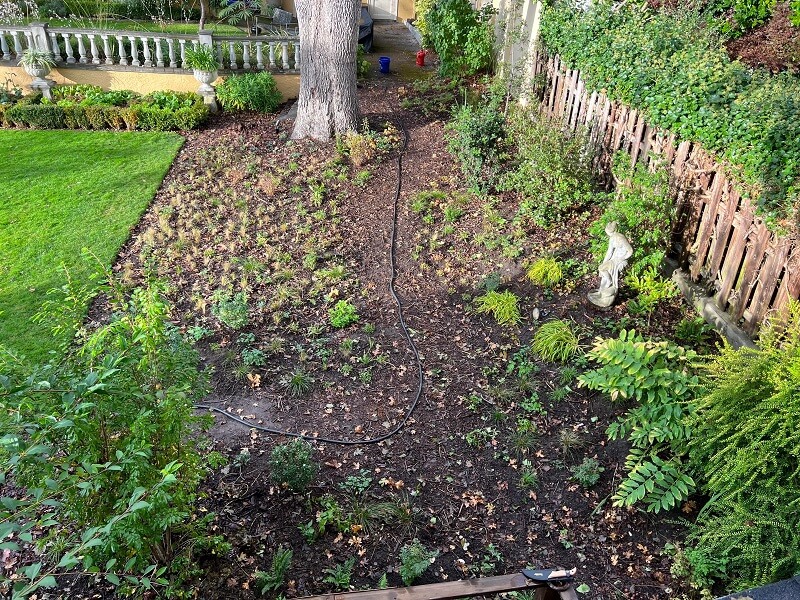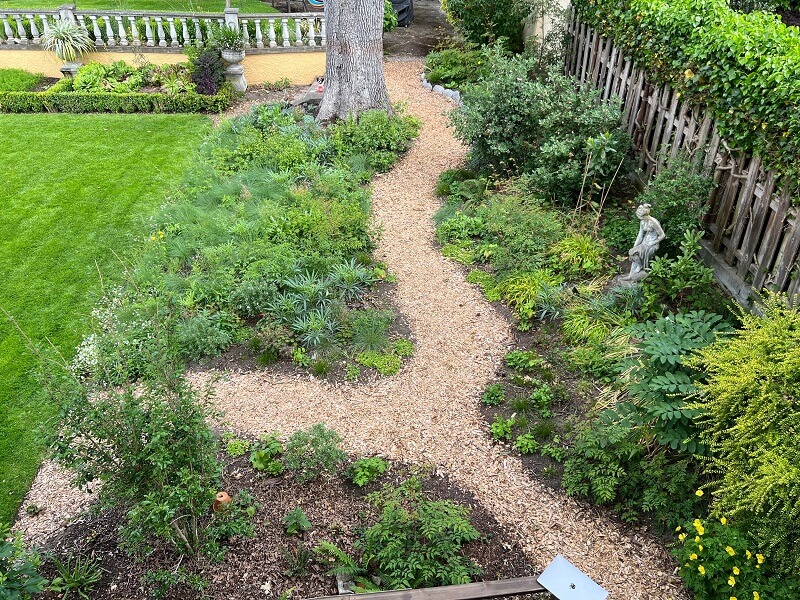Manicured lawns have long symbolized attaining the American dream, including homeownership and prosperity. Yet, amid growing concern about biodiversity loss, there's increasing interest in converting conventional lawns into native plant havens.
Taking to the r/meadowscaping community, one Reddit user posted a series of photos of their meadow conversion. Starting with a foot of leaves in October 2023, their backyard became a lush, serene habitat by the spring.


The U.S. contains 40 million acres of lawn coverage, according to the National Wildlife Federation — often depicted as pristine and aesthetically pleasing landscapes. However, many people overlook the ecological consequences, including 9 billion gallons of daily water usage for irrigation, widespread distribution of toxins from herbicide and fertilizer, and significant habitat loss for pollinators.
Creating a meadow or tapestry lawn has proved to be a much better alternative. These lawns include native grasses and low-lying flowers, which attract and support bees, birds, butterflies, and other small critters.
Since native meadow plants are already adapted to your area, they require far less water. A native lawn reduces water consumption by 1,750,000 gallons in 10 years. Overall, rewilding your yard with native flora could decrease your water bills by $225 and help you save $100 on fertilizer annually.
Tapestry lawns are also low-maintenance, requiring only three to four mowings annually while lowering your carbon footprint, Architectural Digest reported. Consider how just one hour of operating a gas-powered lawn mower releases as many harmful emissions as driving a new car for 45 miles, per the New Hampshire Department of Environmental Services.
Of course, homeowners might also be interested in other lawn replacement options, including buffalo grass, xeriscaping, and clover ground cover. Clover is exceptionally cost-effective, with homeowners able to seed 1,000 square feet of their lawn for only $1.
Other Redditors were impressed with the original poster's yard. "Love seeing how you blended the naturalistic planting into more formal garden elements," one user commented.
Another person asked, "Could you do a wikiHow or one of those project step-by-step things where you lay it all out?"
🗣️ If you were to switch from a grass lawn to a more natural option, which of these factors would be your primary motivation?
🔘 Making it look better 🌱
🔘 Saving money on water and maintenance 💰
🔘 Helping pollinators 🐝
🔘 No way I ever get rid of my lawn 🚫
🗳️ Click your choice to see results and speak your mind
The original poster did share one piece of learned wisdom, commenting, "Don't dig the pathway after you've planted the garden. Oh, the hours I'd have saved if I'd done the path first."
Join our free newsletter for easy tips to save more and waste less, and don't miss this cool list of easy ways to help yourself while helping the planet.









